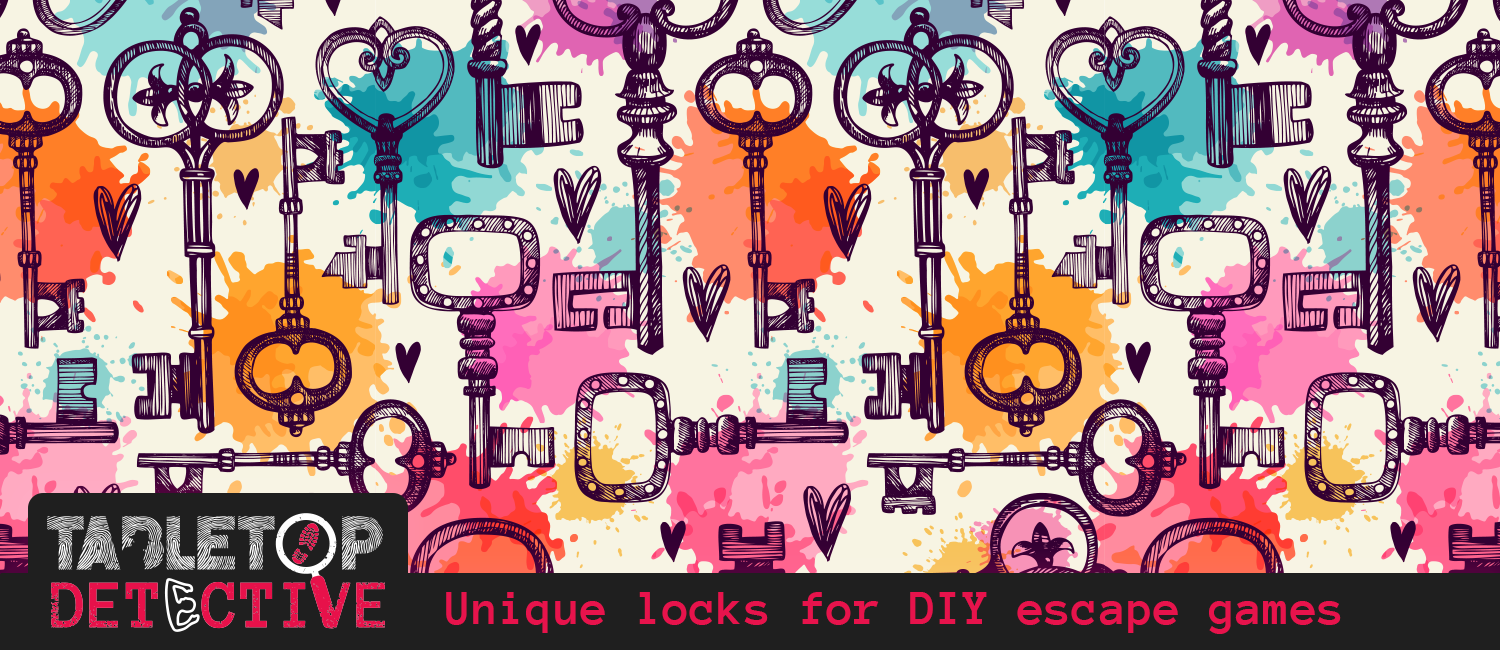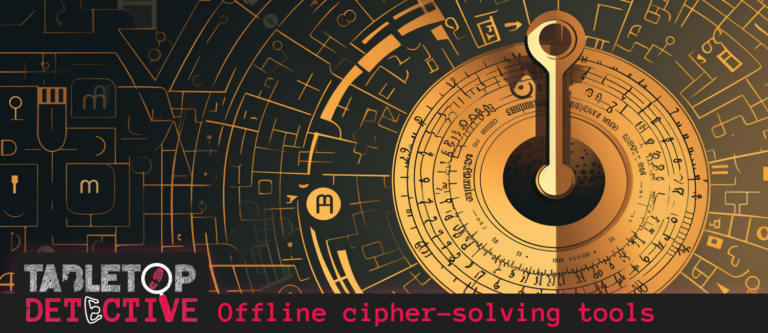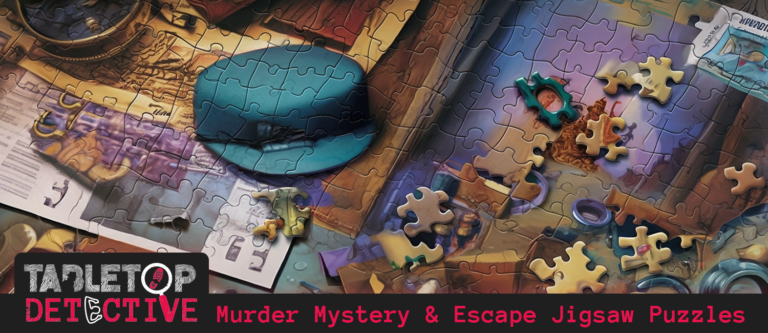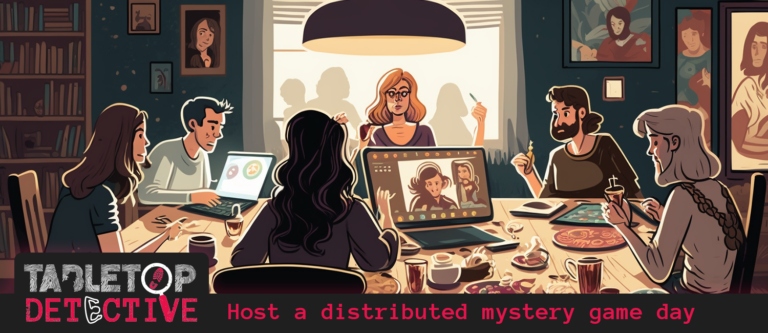Escape rooms have taken the world by storm, offering players a thrilling and challenging experience. If you’re ready to give your fellow Tabletop Detectives a more customized experience with a DIY escape game, you might feel overwhelmed about where to start.
Don’t be intimidated. Start small, with some unique and creative puzzles. Guide your players through a layered experience by hiding certain clues, and additional puzzles, behind clever locks. In this blog post, we’ll explore some unique types of locks that you can use to keep your players talking about your DIY escape game, even if you just start with a small sequence of puzzles.
Many of the more advanced and complex locks used in commercial escape games come at a steep price tag—I’m not sharing those here. Instead, I’ve focused on how you can devise fun puzzles based on locks available on Amazon. With a bit of creativity, you can make even these simpler styles of locks more challenging by using complex ciphers and puzzles as clues. And you might be surprised at how much you can do with the variety already available.
Keyed Padlocks
They might not be the most exciting type of locks, but if you hide the key behind another puzzle, or inside a puzzle box, keyed padlocks can be a fun addition to your DIY escape game without spending a ton of money.
Combination Locks
Combination locks are one of the most commonly-used types of locks in escape rooms, but they can still be unique and challenging. You can add some twists to the combination, like requiring the player to input the numbers in a specific order or adding a specific number of turns between each number.
If you want to keep the lock simple, consider a cipher puzzle using a letter-to-number code. Give players a phrase, with each letter is assigned a specific number, either simple A=1, B=2, etc or sneak in a clue to an offset, so A=11, B=12, etc. The player still must input the correct series of numbers to unlock the lock, but you’ve provided a more satisfying challenge. Looking for another layer of complexity? Try a multi-color combination lock to add a fun chromatic element to your clues.
Laptop Locks
Laptop security cables provide a way to hide a lot of information behind a single lock. If you want to have one lock break your players’ case wide open, hiding a stockpile of digital evidence on a laptop with a security cable might fit the bill. Assuming you already own the laptop you’ll let your players use, the security cable can be an inexpensive way to introduce variety to the game, while still making players work for their clues.
Keyless Locks
Keyless locks are an excellent option for an escape game because they’re often more challenging to unlock. Keyless locks can be operated by a combination or a code.
One keyless lock option is a biometric lock. Biometric locks use fingerprint or facial recognition technology to unlock the lock. These locks can be made even more challenging by requiring players to find a specific item or solve a puzzle before they can use the biometric lock. They can introduce unnecessary complexity (and potential privacy concerns) into your DIY escape game design process. But with some creativity, you might just find a brilliant way to make these locks work.
If you’re just looking to introduce lock variety with a keyless option, without the hassle of biometrics, a simple RFID lock with a key card can give the illusion of “high tech”, even though it’s still essentially a keyed lock.
Word Locks
Cipher locks are an excellent option for a DIY escape game because they require players to use critical thinking skills and solve puzzles. You can vary the level of difficulty of a simple word-based combination by varying how you encrypt the clue.
Looking for easy mode for early puzzles or new players? Use a simple shift cipher or a substitution cipher using a commonly-known alphabet like pigpen.
Looking to increase the difficulty? Try a keyword cipher. Alternately, try obscuring a simpler substitution cipher in something less obvious, like the angles for semaphore letters in a series of clocks, or the dots for braille in a more complex picture.
- Wordlock Red
- Luggage-sized word padlock
- Wordlock resettable luggage lock
- Master Lock Word Combination Lock
- Master Barrel-style Lock Word Combination Lock
Directional Locks
This is one of my favorite niche locks. The lock input moves up, down, left, and right, and you create the combination out of a sequence of these directions. Then create a puzzle that reveals that same sequence of directions to your players.
My favorite version of this clue has players listen to a medley of songs, each including the words “up”, “down”, “left” or “right”, but try quotes from books or poems if you want a written clue. Or throw in references to “north”, “south”, “east”, and “west” for another level of challenge.
Fair warning: it’s tricky to strike a balance between including enough of the text/lyrics so it’s not too obvious what the important element is (ie. the direction) and providing so much content that players get overwhelmed with possibilities. Be prepared with hints if your players struggle until you have some practice creating this type of puzzle.
Lock boxes
Lock boxes come in a wide variety of sizes and shapes, and can be a great way to layer puzzles inside other puzzles. Start with a large lock box that players need to uncover the combination, and hide a smaller key safe inside. That, in turn, provides access to another puzzle once players reveal the key.
Puzzle boxes
Puzzle boxes are a great alternative to traditional lock boxes with simple keys or combinations. They offer players challenge and variety, while still filling the same escape game need of keeping clues or keys inaccessible until players solve prerequisite puzzles.
- Good Luck Puzzle Box Secret
- iDventu Cluebox Escape Room in a Box
- Puzzle Box with Hidden Compartment
- Cryptex Da Vinci Code Money Puzzle Box
Time-Locked Boxes
Time-locked boxes are a unique way to add a time element to your escape game. These boxes have with a timer that must reach zero before the lock can be opened.
You can also use a combination lock in conjunction with a time-locked box to create a multi-step puzzle. Players must first unlock the combination lock to reveal the timer, and then solve puzzles or complete tasks before the timer runs out to unlock the time-locked box.
For affordable at-home options, look for “habit control” devices that help people limit screen time. Just throw a sticker or decorative tape over any branding to avoid breaking immersion for your players.
Incorporating unique and challenging locks into your DIY escape game is a great way to make your game stand out. From combination locks to sound-activated locks, there are many different types of locks that you can use to create a fun and engaging experience for your players.
When designing your escape puzzles, be sure to consider the difficulty level of each lock and how it fits into the overall puzzle. With a little creativity, you can design a truly unique and memorable escape game that your players will love.




